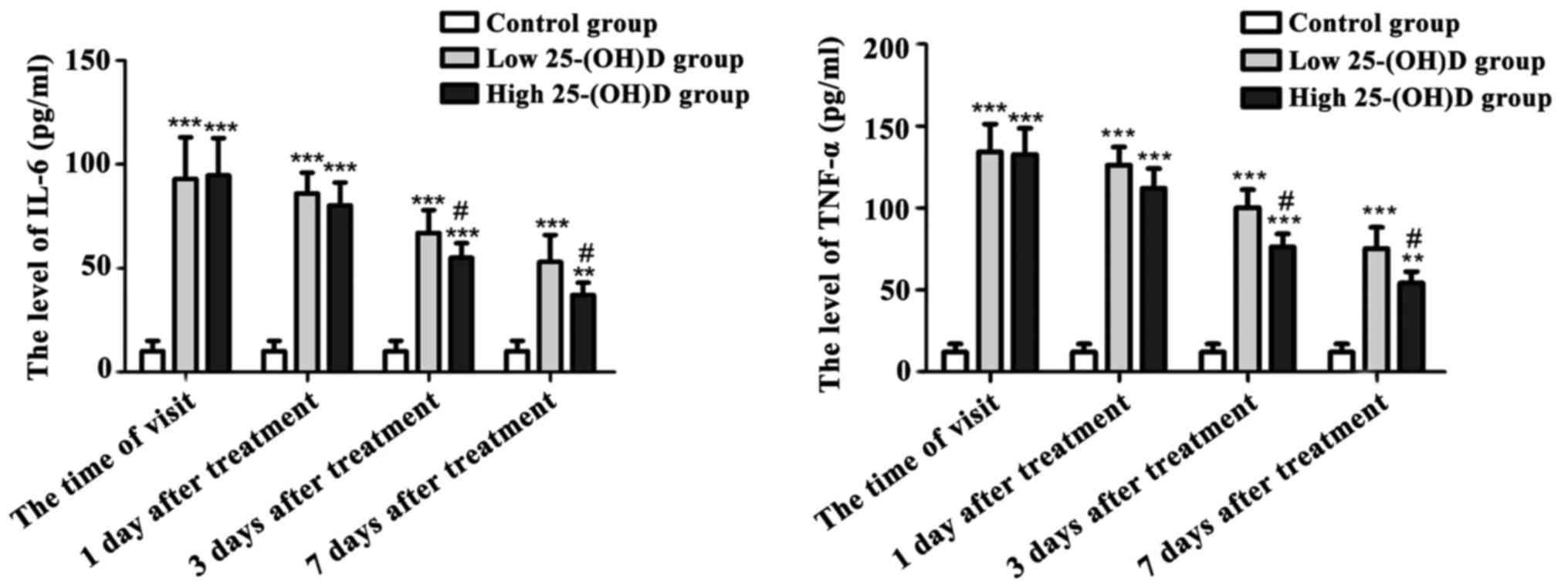|
1
|
National Asthma Education and Prevention
Program: Expert Panel Report 3 (EPR-3): Guidelines for the
diagnosis and management of asthma-summary report 2007. J Allergy
Clin Immunol. 120:94–138. 2007. View Article : Google Scholar
|
|
2
|
Fitzpatrick AM, Teague WG, Holguin F, Yeh
M and Brown LA: Severe asthma research program: Airway glutathione
homeostasis is altered in children with severe asthma: Evidence for
oxidant stress. J Allergy Clin Immunol. 123:146–152. 2009.
View Article : Google Scholar : PubMed/NCBI
|
|
3
|
Fitzpatrick AM, Gaston BM, Erzurum SC and
Teague WG: National Institutes of Health/National heart, lung, and
blood institute severe asthma research program: Features of severe
asthma in school-age children: Atopy and increased exhaled nitric
oxide. J Allergy Clin Immunol. 118:1218–1225. 2006. View Article : Google Scholar : PubMed/NCBI
|
|
4
|
Wong GW, Ko FW, Hui DS, Fok TF, Carr D,
von Mutius E, Zhong NS, Chen YZ and Lai CK: Factors associated with
difference in prevalence of asthma in children from three cities in
China: Multicentre epidemiological survey. BMJ. 329:4862004.
View Article : Google Scholar : PubMed/NCBI
|
|
5
|
Wjst M, Altmüller J, Braig C, Bahnweg M
and André E: A genome-wide linkage scan for 25-OH-D(3) and
1,25-(OH)2-D3 serum levels in asthma families. J Steroid Biochem
Mol Biol. 103:799–802. 2007. View Article : Google Scholar : PubMed/NCBI
|
|
6
|
Chawes BL, Bønnelykke K, Jensen PF, Schoos
AM, Heickendorff L and Bisgaard H: Cord blood 25(OH)-vitamin D
deficiency and childhood asthma, allergy and eczema: The COPSAC2000
birth cohort study. PLoS One. 9:e998562014. View Article : Google Scholar : PubMed/NCBI
|
|
7
|
Dizier MH, Besse-Schmittler C,
Guilloud-Bataille M, Annesi-Maesano I, Boussaha M, Bousquet J,
Charpin D, Degioanni A, Gormand F, Grimfeld A, et al: Genome screen
for asthma and related phenotypes in the French EGEA study. Am J
Respir Crit Care Med. 162:1812–1818. 2000. View Article : Google Scholar : PubMed/NCBI
|
|
8
|
Cranney A, Horsley T, O'Donnell S, Weiler
H, Puil L, Ooi D, Atkinson S, Ward L, Moher D, Hanley D, et al:
Effectiveness and safety of vitamin D in relation to bone health.
Evid Rep Technol Assess. 158:1–235. 2007.
|
|
9
|
Panda DK, Miao D, Tremblay ML, Sirois J,
Farookhi R, Hendy GN and Goltzman D: Targeted ablation of the
25-hydroxyvitamin D 1α -hydroxylase enzyme: Evidence for skeletal,
reproductive, and immune dysfunction. Proc Natl Acad Sci USA.
98:7498–7503. 2001. View Article : Google Scholar : PubMed/NCBI
|
|
10
|
Liu PT, Stenger S, Li H, Wenzel L, Tan BH,
Krutzik SR, Ochoa MT, Schauber J, Wu K, Meinken C, et al: Toll-like
receptor triggering of a vitamin D-mediated human antimicrobial
response. Science. 311:1770–1773. 2006. View Article : Google Scholar : PubMed/NCBI
|
|
11
|
Sutherland ER, Goleva E, Jackson LP,
Stevens AD and Leung DY: Vitamin D levels, lung function, and
steroid response in adult asthma. Am J Respir Crit Care Med.
181:699–704. 2010. View Article : Google Scholar : PubMed/NCBI
|
|
12
|
Litonjua AA and Weiss ST: Is vitamin D
deficiency to blame for the asthma epidemic? J Allergy Clin
Immunol. 120:1031–1035. 2007. View Article : Google Scholar : PubMed/NCBI
|
|
13
|
van der Meer IM, Karamali NS, Boeke AJ,
Lips P, Middelkoop BJ, Verhoeven I and Wuister JD: High prevalence
of vitamin D deficiency in pregnant non-Western women in The Hague,
Netherlands. Am J Clin Nutr. 84:350–353; quiz 468–469. 2006.
View Article : Google Scholar : PubMed/NCBI
|
|
14
|
Martins D, Wolf M, Pan D, Zadshir A,
Tareen N, Thadhani R, Felsenfeld A, Levine B, Mehrotra R and Norris
K: Prevalence of cardiovascular risk factors and the serum levels
of 25-hydroxyvitamin D in the United States: Data from the Third
National Health and Nutrition Examination Survey. Arch Intern Med.
167:1159–1165. 2007. View Article : Google Scholar : PubMed/NCBI
|
|
15
|
Björnsdottir US and Cypcar DM: Asthma: An
inflammatory mediator soup. Allergy. 54:55–61. 1999. View Article : Google Scholar : PubMed/NCBI
|
|
16
|
Jayaram L, Pizzichini E, Lemière C, Man
SF, Cartier A, Hargreave FE and Pizzichini MM: Steroid naive
eosinophilic asthma: Anti-inflammatory effects of fluticasone and
montelukast. Thorax. 60:100–105. 2005. View Article : Google Scholar : PubMed/NCBI
|
|
17
|
Beasley R, Roche W and Holgate ST:
Inflammatory processes in bronchial asthma. Drugs. 37:117–122;
discussion 127–136. 1989. View Article : Google Scholar : PubMed/NCBI
|
|
18
|
Hinks TSC, Brown T, Lau LC, Rupani H,
Barber C, Elliott S, Ward JA, Ono J, Ohta S, Izuhara K, et al:
Multidimensional endotyping in patients with severe asthma reveals
inflammatory heterogeneity in matrix metalloproteinases and
chitinase 3-like protein 1. J Allergy Clin Immunol. 138:61–75.
2016. View Article : Google Scholar : PubMed/NCBI
|
|
19
|
Simpson JL, Scott R, Boyle MJ and Gibson
PG: Inflammatory subtypes in asthma: Assessment and identification
using induced sputum. Respirology. 11:54–61. 2006. View Article : Google Scholar : PubMed/NCBI
|
|
20
|
Vilarrasa N, Vendrell J, Maravall J, Elío
I, Solano E, San José P, García I, Virgili N, Soler J and Gómez JM:
Is plasma 25(OH) D related to adipokines, inflammatory cytokines
and insulin resistance in both a healthy and morbidly obese
population? Endocrine. 38:235–242. 2010. View Article : Google Scholar : PubMed/NCBI
|
|
21
|
Peterson CA and Heffernan ME: Serum tumor
necrosis factor-alpha concentrations are negatively correlated with
serum 25(OH)D concentrations in healthy women. J Inflamm (Lond).
5:102008. View Article : Google Scholar : PubMed/NCBI
|











